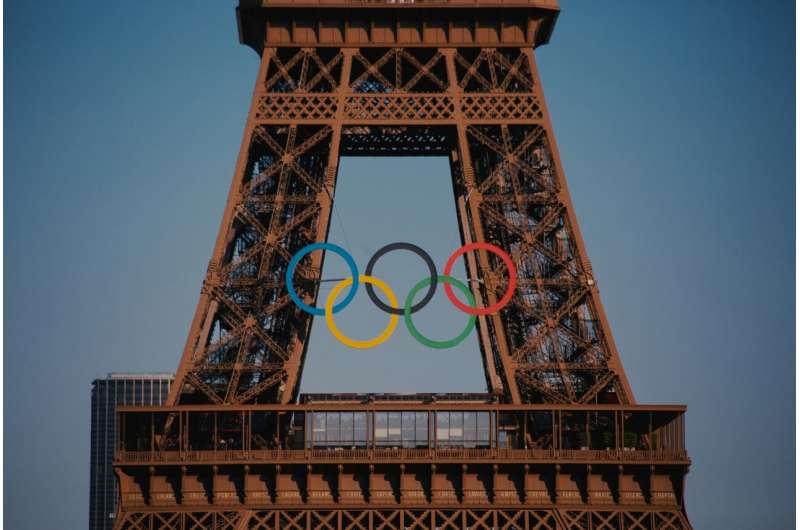
The Paris Olympics has proudly proclaimed to be the first games in 128 years to offer gender equality.
This has been achieved by the International Olympic Committee (IOC) providing an equal number of quota places for female and male athletes, while also increasing the number of women in coaching, broadcasting and sport governance roles.
However, gender equality in sport is not just about the numbers—it involves dismantling systemic patriarchy piece by piece.
Female athlete participation
The ratio of female-to-male athlete parity is significant in the Paris Olympics, given women were banned from the first games in 1896 and only permitted to compete in small numbers in “female-appropriate” events four years later.
There was a steady increase in female participation as the games became more popular through the 20th century. However, it was not until 1979 that the right of women to participate in sport was formally included in the first international convention (United Nations) on the elimination of all forms of discrimination against women.
It took another 33 years for women to be allowed to compete in all events on the Olympic program in 2012.
At the Paris Olympics, 50% of competing athletes are women, and the Australian team has its highest ever proportion of women (55%).
Women’s visibility
The IOC has been working hard at shaking off its patriarchal reputation for the past three decades or so.
Two major milestones were the establishment of the Women and Sport Working Group in 1995, and the amending of the Olympic Charter a year later to include advancing women in sport as an Olympic principle.
Despite this progress, women’s Olympic events have often been sidelined by the media, enabling male athletes to enjoy greater publicity (and associated sponsorship) than their female counterparts.
The long-established scheduling of events offers male athletes peak viewing times across the globe, thereby consigning many women to the margins.
In Paris, this gender discrimination has been disrupted to better the balance.
Combat and strength sports are now based on weight categories, permitting the women’s and men’s events to alternate instead of having men’s events available in the popular evening slot.
The women’s marathon—only introduced to the Olympics in 1984—will also conclude the athletics program instead of the men’s for the first time.
Media representation
Amplifying women’s voices and stories from the games has been a key objective for the Paris Olympics.
The IOC has been instrumental in this endeavor via its 2024 Portrayal Guidelines: gender-equal, fair and inclusive representation in sport.
These guidelines have led to a large increase in the number of female staff in broadcast roles and production teams in Paris.
And female-targeted training camps in 2023 provided by the Olympic Broadcasting Services (OBS) have been a timely institutional transformation.
Improved media representation of female athletes is also a priority, focusing on how they are visually captured and presented in all forms of media and communication.
This helps to reframe persistent patriarchal narratives about how sportswomen must maintain their femininity to be worthy recipients of the male gaze.
Regrettably, this is still a work in progress for some commentators such as Bob Bollard, whose recent sexist “makeup” remark went viral when he was reporting on the gold medal win for the Australian women’s 4x100m freestyle relay team.
After the Bollard incident, Yiannis Exarchos, the OBS chief, swiftly reminded mostly male camera operators to refrain from any sexist filming of female athletes. He said the problem was mainly down to “unconscious bias,” with camera operators and TV editors tending to show more close-up shots of women than men.
Leadership and infrastructure
Female under-representation in the IOC is well documented.
There were no women in the IOC from 1896 to 1981 before Flor Isava Fonseca (Venezuela) and Pirjo Häggman (Finland) were co-opted as the first two female IOC members in 1981.
In the IOC’s most recent election in July, the number of female members rose to 42.3%—more than a 100% increase in the past decade.
Following a long overdue IOC rule change in 2020, the traditional male flag bearer in the Olympics Opening Ceremony was accompanied by a female.
Gender issues arise with elite sport coaches too—only 13% of coaches at the 2020 Tokyo Olympics were women.
In Paris, it is estimated one in ten coaches are female.
Outrage about sexist Nike uniforms and the lack of facilities for “mum-aletes” until the 2024 games both highlight the incessant institutional hurdles elite sportswomen encounter.
A new era for female athletes
The Paris games are a springboard for much needed systemic change in the minutiae of Olympic policies and practices.
Female athletes are no longer victims of vast patriarchal conspiracies to lock them out of this male-dominated arena. They’ve gained ground and are kicking sexism to the touchline with relish.
We all need to welcome in this new era.
Provided by
The Conversation
This article is republished from The Conversation under a Creative Commons license. Read the original article.![]()
Citation:
Is Paris 2024 really achieving its goals for gender equality? (2024, August 7)
retrieved 7 August 2024
from https://phys.org/news/2024-08-paris-goals-gender-equality.html
This document is subject to copyright. Apart from any fair dealing for the purpose of private study or research, no
part may be reproduced without the written permission. The content is provided for information purposes only.
